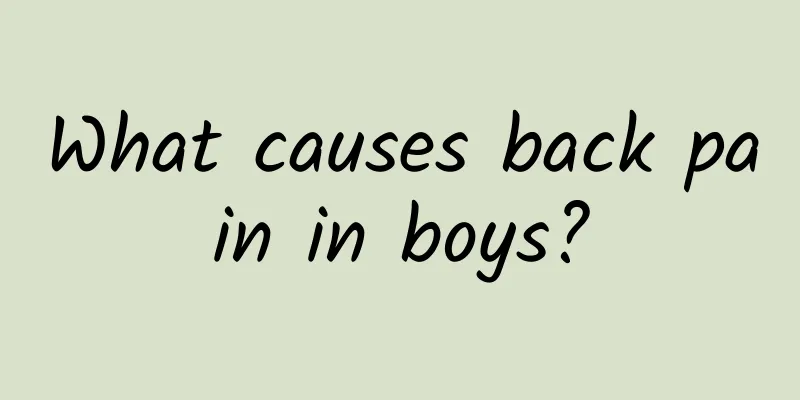【Fracture healing】The magical process of fracture healing!

|
People will encounter many accidents in their lives, such as fractures. Although fractures are painful, they are not final and will heal through the body's powerful self-healing ability. However, many people are curious about how fractures heal. So what is the process of fracture healing like? There are four stages of fracture healing: 1. Hematoma formation In addition to the destruction of bone tissue itself, fractures are also accompanied by damage or tearing of nearby soft tissues. Bone tissue and bone marrow are rich in blood vessels. Fractures are often accompanied by heavy bleeding, which fills the two ends of the fracture and the surrounding tissues to form a hematoma. The hematoma usually coagulates within a few hours. Like other tissue injuries, white blood cell neutrophil infiltration can be seen at the fracture site. 2. Fibrous callus formation About 2 to 3 days after a fracture, fibroblasts and new capillaries proliferating from the endosteum and periosteum will invade the hematoma, and the hematoma will begin to organize. Most of these fibroblasts are actually the predecessors of chondrocytes and osteoblasts. The proliferating tissue gradually joins, fills and bridges the broken ends of the fracture, and then fibrosis occurs to form fibrous callus, or temporary callus. After about 1 week, the above-mentioned proliferating granulation tissue and fibrous tissue can further differentiate to form hyaline cartilage. 3. Bone callus formation The further development of fracture healing is that osteoblasts produce new bone to gradually replace the above-mentioned fibrous callus. The bone formed at the beginning is osteoid tissue, which later undergoes calcification to form woven bone, i.e. bony callus. The cartilage tissue in the fibrous callus, like chondroitinization during bone development, undergoes calcification and evolves into bone tissue, participating in the formation of bony callus. The woven bone formed at this time still cannot meet the normal functional requirements because its structure is not dense enough and the arrangement of trabeculae is relatively disordered. 4. Callus Remodeling or Reshaping After the above-mentioned callus is formed, the fracture ends are only connected by immature, irregularly arranged woven bones. In order to meet the physiological requirements of the human body and have a stronger structure and function, the woven bone is further reconstructed into mature lamellar bone, and the normal relationship between the cortical bone and the medullary cavity is restored. The reconstruction is carried out under the coordinated action of the bone absorption of osteoclasts and the formation of new bone by osteoblasts, that is, more new bone is formed in the part of the fractured bone that bears the greatest stress, and the bone that is not required for mechanical function is absorbed, so that the upper and lower ends of the fracture are connected again according to the original relationship, and the medullary cavity is also reconnected. Under normal circumstances, after the above steps, the fractured part recovers to the same structure as the original bone tissue and achieves complete healing. How to speed up the healing of fractures? Fracture healing requires sufficient nutrients for bone building. There are many factors that affect fracture healing. First, the damaged bone needs enough blood to provide sufficient nutrients. If the nutrients are insufficient, the healing and connection of the bones will be prolonged, and the recovery days will be extended. The elderly recover more slowly because their tissue regeneration ability is weaker and their diet is simple and unbalanced, resulting in a lack of nutrients required for recovery. Patients of any age will recover more easily if they supplement good nutrition. In addition to a large amount of vitamin C, protein, calcium and vitamin D should also be taken in adequately. Protein is the main material in the proliferation of connective tissue, and calcium can make the skeleton firm and solid during the ossification process. Normally, the excess calcium we absorb will be stored in the tissues at both ends of the large bones for use in times of shortage, but if calcium is not properly taken in for a period of time, there will be no reserve. The absorption rate of calcium is related to vitamin D, which can be obtained from sufficient sunlight exposure. In addition, foods rich in vitamin D include: whole milk, cod liver oil, etc. |
>>: For lumbar pain, these tests need to be done
Recommend
Men's reproductive organs pictures
Although we are in an open society, for men, when...
Several ways for men to maintain health
As we all know, health care is not just for the e...
How long should I abstain from sex for epididymitis?
Patients with epididymitis will experience sympto...
What should I do if there is a small red bubble on the glans?
The glans is the head of the male penis. The glan...
Can the bladder meridian be used to lose weight? Find out where it is!
Bladder meridian obstruction is a common disease,...
Exercises for impotence
What are the exercise methods and hazards of impo...
How should men lose weight fastest and most effectively?
Nowadays, everyone is pursuing beauty, so weight ...
How can men nourish their kidneys?
Whether it is a man or a woman, if they have kidn...
Why does a man’s skin turn yellow?
The face is the first thing that people think of ...
How big is the Chinese male reproductive organ?
Sexual health is something that every man is very...
There are small granules on the testicular epidermis
Orchitis refers to the inflammation of the male t...
Sexual life of men in their thirties
When men grow up to their thirties, their physica...
Why is the lower body fat? Causes of lower body obesity
Flat buttocks will make a man's lower body lo...
What is stomach acid? What are the functions of stomach acid?
We eat a variety of foods every day, so when food...
The effects and functions of black wolfberry specifically for men
For women, black wolfberry is like a walking &quo...









